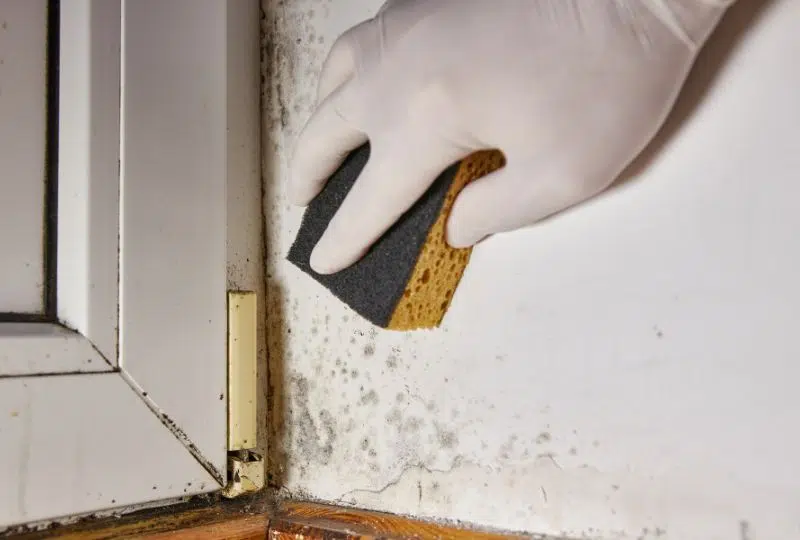
No homeowner wants to discover mold in their home. Mold often grows under cabinets, in the shower, inside attics and crawl spaces and more.
Due to all the places where molds can grow, you’re likely to find mold at some point. But if you’re unfamiliar with treating mold, you might not know what to do after finding mold in your home. Here are a few steps for dealing with it.
You won’t be able to treat mold growth without first understanding its source. Cleaning a small spot of mold on your own isn’t difficult with home remedies. But without treating it at its source, the mold will return in no time.
When investigating mold on your own, you should always wear the proper protective gear, including protective glasses or goggles, a respiratory mask, and gloves. This will prevent you from taking in harmful mold spores. Investigate areas where moisture can collect, such as near plumbing or ventilation, around leaks, and in bathrooms.
Once you discover the source of the mold, you shouldn’t wait to treat it. Mold growth can get more severe over time with the right conditions. Additionally, mold growth can put you and your family at risk.
There are certain health risks associated with prolonged mold exposure, such as difficulty breathing, infections, and allergy symptoms. To prevent these risks, you should treat mold or schedule mold remediation quickly.
If you start to experience mold exposure symptoms but haven’t located mold, this could be a sign that you have mold growing out of sight in your home. Call a mold professional if you suspect mold exists in a place you can’t see.
Image Source: pexels.com
You should only use DIY methods for treating small patches or areas of mold at home. When mold growth spans areas larger than the size of a bath towel, it’s time to call in the professionals.
Mold remediation teams are specialists in identifying and treating any of the three types of molds. Speaking of which, you should also never try to remove toxic black mold on your own either. This type of mold can cause dangerous infections if you disturb it and expose yourself to the spores.
Remember these steps for what to do after finding mold in your home the next time you suspect mold or mildew.
You spend a lot of time in your home, so it’s important to create a…
If you love a modern house vibe, you can find several easy ways to update…
Are you looking to spruce up your home without breaking the bank? Home improvements don’t…
Florida, also known as the Sunshine State, boasts a vibrant real estate market filled with…
A backyard fireplace is the perfect feature to take any outdoor space up a notch.…
The kitchen, often referred to as the heart of a home, is where both meals…